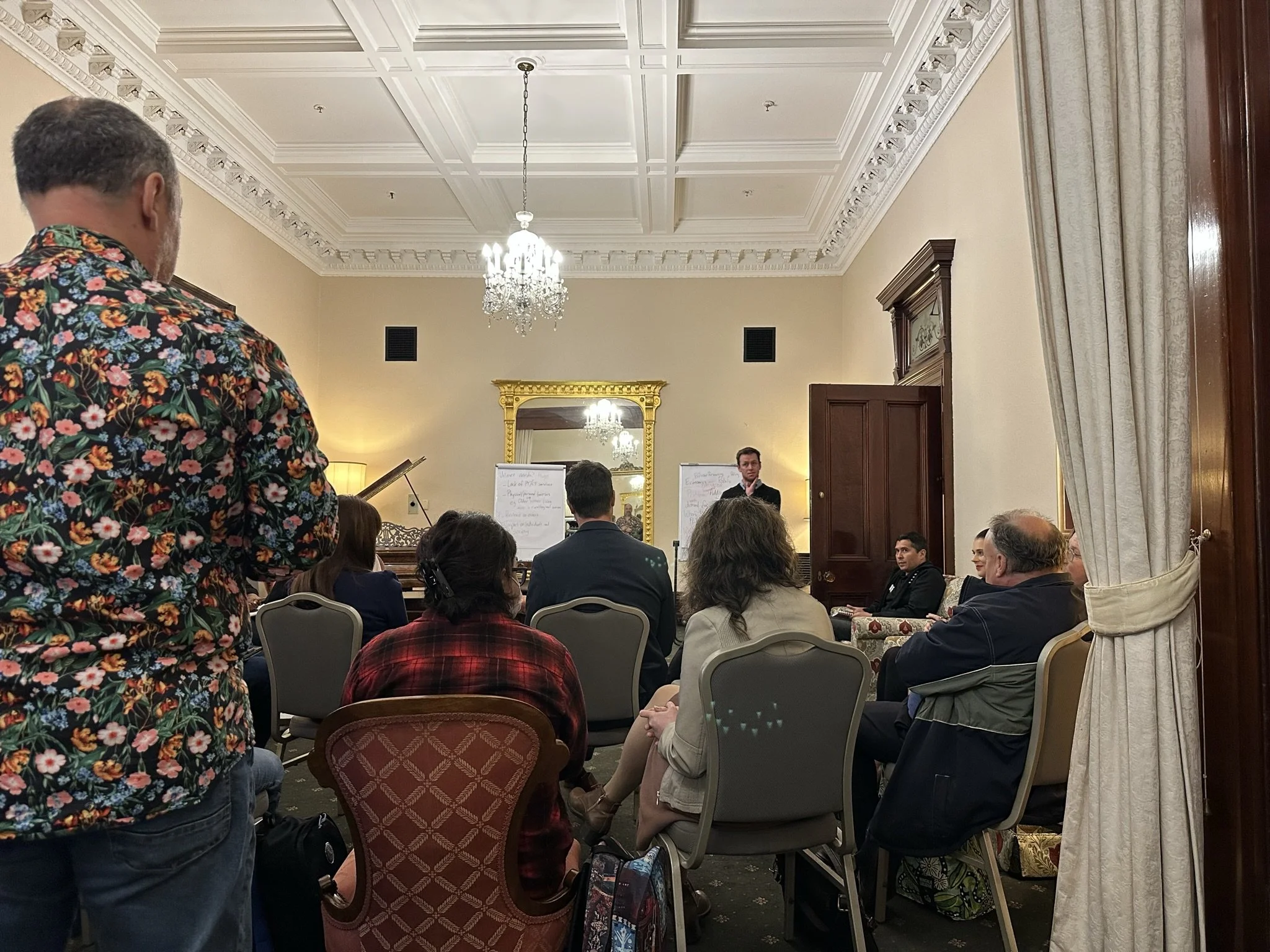Why you should be prototyping with customers
Zoe Green (Meld Studios)
Session: 2
Room: Portico
Format: Discussion
Summary: Zoe Green of Meld Studios discusses the importance of prototyping with customers in the design process. It allows humans to be centred when addressing the needs and requirements of transport-related designs. Ranging from low-fidelity to high-fidelity prototypes provide a way to test an idea, learn, gather evidence, and iterate what challenges are to be addressed at varying stages of the project. Tools like VR are used to acquire valuable insights and the feedback received from customers fosters confidence in what is being delivered to the world. In turn, ensuring it aligns with real user needs- it is important to acknowledge that everyone has a different experience and that it is fine to not know everything when pursuing a project. Finding a balance in perspective and decision-making is vital when working towards a successful design.
Hammer, Spanner and Drill: Road pricing in New York, London, Singapore
Harry (PBA)
Session: 2
Room: Yarra Room
Format: Presentation
Summary: Harry introduces the idea of paying to avoid congestion as opposed to paying to cause congestion.
Harry highlighted the various ways in which road pricing and parking charges can address the challenges of automobiles in the urban environment. The Drill, Hammer, and Spanner terminology coined by Harry provided a framework for distinguishing road pricing in cities such as New York, London, and Singapore. While the general conversation addressed the challenges of equity, capacity, and existing measures and targets, Harry's theory for Drill, Spanner, and Hammer was as follows: Drill Fees: the fees that generate revenue but do not influence significant behavioral shifts. These are not related to the road capacity or traffic and include tolls on Melbourne freeways or in NYC congestion charging. Hammer Fees: the fees that disincentivize consumption behaviors. To influence user decisions, these fees are generally high and increasing while generating some revenue. Examples of these can be found in London traffic charging schemes. Spanner Fees: these are a dynamic model of taxation that seeks to address particular complexities through several tax bands. With the example of Singapore Harry highlighted how this charging scheme can be effective in shifting user behaviour while optimising service capabilities of existing infrastructures. In Singapore's case, it is affordable and, therefore does not create an equity problem.
Community Transport or public transport?
Adam Greig
Session: 2
Room: Melbourne Room
Format: Discussion
Summary: Public transport opportunities in communities, how stable can it be? How can people get to use public transport without it being a barrier?
Expensive transport in Regional Victoria, lack of flexibility
We need to think about the communities and systems that are responsive to individuals and integration to provide equity.
Transport must be responsive in a micro and macro vision in order to attend to issues such as individual needs, cost, usage dynamics, and capabilities of the system.
The funding model in Victoria (volunteer component) is set up in a poor manner, community transport is seen as fragmented and as a poor system, whereas a more competitive and improved program should be developed.
Accessibility:
We don’t only need more money assigned to transport but also to use it in a better way.
Provision of transport in local scenarios is done by local people, but they need effective solutions for its specific needs and contexts (i.e. low demand, aged population).
Hence addressing unmet needs of public transport such as lack of PT/CT services, and physical and personal barriers may be a new question to solve.
Women in rural areas and their mobility is severely constrained.
People in the cities are not aware of the lack of transport in rural areas.
Micro and macro responses - looking at scale and who needs help in order to access public transport. Is the State willing to fund these needs? The system does not take care of accessibility properly. Lack of public transport can lead to being cut off from employment opportunities, especially for people without driver’s licenses.
Community transport helps give back to their own community. There is a growing demand for public and community transport with a growing population. There is a fixed narrative of who we are planning transport for.
Community transport should be available for everyone. There is an opportunity for informal driving/shared car driving in the 'bush' to help elderly, and widowed people. These communities are more likely to help one another. It's hard to make a system 'one-size' fits all. There are examples of this in city retirement homes - many elder people are left isolated and stuck without having their needs met in everyday life.


